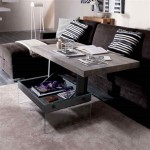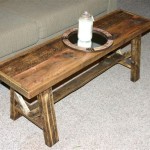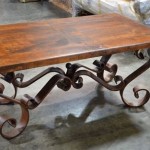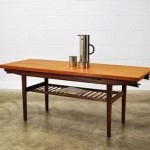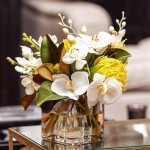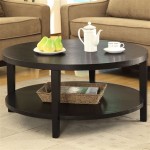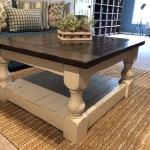Modern Dining Table Centerpiece Ideas
The dining table is often the focal point of a dining room, representing a space for gathering, sharing meals, and engaging in conversation. A thoughtfully chosen centerpiece can significantly enhance the aesthetic appeal of the table and the overall ambiance of the room. Modern dining table centerpieces often emphasize simplicity, functionality, and the incorporation of natural elements. They strive to create a visually appealing focal point without obstructing views or hindering interaction among diners.
Successfully integrating a modern centerpiece requires careful consideration of several factors, including the size and shape of the table, the existing décor of the dining room, and the desired mood or atmosphere. Overly large or elaborate centerpieces can overwhelm a small table or clash with a minimalist design. Conversely, a too-small or uninspired centerpiece may fail to make a significant impact. The ideal centerpiece complements the space and reflects the homeowner's personal style.
Minimalist Floral Arrangements
A minimalist approach to floral arrangements is a hallmark of modern design. Instead of overflowing bouquets, consider showcasing a few carefully selected stems in a sleek vase. Single-stem displays, such as a calla lily or an orchid, can be particularly effective in creating a refined and elegant aesthetic. The choice of vase is crucial; opt for vases with clean lines and simple shapes, such as cylinders, spheres, or geometric designs. Materials like glass, ceramic, or metal in neutral tones (white, black, grey, or silver) are often preferred.
The type of flowers used in a minimalist arrangement should also be carefully considered. Flowers with strong, distinctive shapes and textures, such as succulents, air plants, or branches, can add visual interest without overwhelming the space. Green foliage, such as eucalyptus or fern fronds, can also be used sparingly to create a sense of freshness and naturalness. The key is to maintain a sense of balance and restraint, avoiding excessive embellishments or overcrowding.
Another variation of the minimalist floral approach involves using a series of small vases, each holding a single stem or a small cluster of flowers. This creates a visually interesting and dynamic display that can be easily customized and rearranged. The vases can be identical in shape and size or intentionally mismatched for a more eclectic look. This approach is particularly well-suited for long, rectangular tables, where a single centerpiece might feel insufficient.
Seasonal considerations can also influence the choice of flowers and foliage. In the spring, for example, tulips, daffodils, or cherry blossoms can bring a sense of vibrancy and renewal to the dining table. In the autumn, branches with colorful leaves or dried seed pods can create a warm and inviting atmosphere. By adapting the floral arrangement to the changing seasons, the centerpiece can remain fresh and relevant throughout the year.
Maintenance is also an important factor to consider when choosing a floral centerpiece. Fresh flowers require regular watering and trimming to maintain their appearance and prevent wilting. Alternatively, faux flowers or dried arrangements can provide a longer-lasting and lower-maintenance option. However, it is important to choose high-quality faux flowers that look realistic and avoid those that appear cheap or artificial. Dried arrangements can add a rustic and textural element to the dining table, but they should be dusted regularly to prevent the accumulation of dust and debris.
Geometric and Sculptural Elements
Geometric shapes and sculptural objects can serve as striking and contemporary centerpieces, adding a touch of artistic sophistication to the dining table. These elements can range from simple geometric forms, such as spheres, cubes, or pyramids, to more complex and abstract sculptures. The materials used can vary widely, including metal, glass, ceramic, wood, or even concrete.
When selecting a geometric or sculptural centerpiece, consider the overall style of the dining room and the existing décor. A sleek, minimalist sculpture in polished metal might be well-suited for a contemporary space, while a rustic wooden sculpture could complement a more traditional or farmhouse-style dining room. The size and scale of the sculpture should also be carefully considered, ensuring that it is proportionate to the table and does not overwhelm the space.
One popular approach is to use a collection of smaller geometric objects, arranged in a visually interesting composition. These objects can be of varying shapes, sizes, and materials, creating a sense of depth and dimension. For example, a collection of ceramic spheres in different colors and textures can be arranged on a wooden tray to create a visually appealing centerpiece. This approach allows for greater flexibility and customization, as the arrangement can be easily rearranged or modified to suit changing tastes or seasons.
Another option is to use a single, statement-making sculpture as the centerpiece. This can be a more dramatic and impactful choice, but it requires careful consideration to ensure that the sculpture is appropriate for the space and does not clash with the existing décor. The sculpture should be a piece that you genuinely love and that reflects your personal style. It should also be well-crafted and visually appealing from all angles, as it will be viewed from all sides of the table.
The use of reflective surfaces, such as glass or polished metal, can enhance the visual impact of a geometric or sculptural centerpiece. These materials can reflect light and create a sense of spaciousness and airiness in the dining room. However, it is important to avoid using too many reflective surfaces, as this can create a cluttered or overwhelming effect. Balance is key.
Lighting can also play a significant role in highlighting a geometric or sculptural centerpiece. Consider using a strategically placed spotlight or candlelight to draw attention to the centerpiece and create a more dramatic effect. The lighting should be subtle and not too harsh, as this can distract from the beauty of the sculpture itself. The goal is to create a warm and inviting atmosphere that enhances the overall dining experience.
Natural Elements and Textural Contrast
Incorporating natural elements into a dining table centerpiece can bring a sense of organic beauty and tranquility to the space. This can involve the use of natural materials such as wood, stone, branches, leaves, or even fruit. The key is to combine these elements in a way that is both visually appealing and harmonious with the overall décor of the dining room.
One popular approach is to create a centerpiece using a wooden tray or bowl filled with natural objects. This can include items such as pinecones, acorns, shells, rocks, or even driftwood. The objects can be arranged in a random or organized fashion, depending on the desired aesthetic. Adding a few candles or small succulents can further enhance the natural feel of the centerpiece. A wooden tray with moss and small decorative birds can evoke a sense of a forest floor.
Another option is to use a branch or a piece of driftwood as the centerpiece itself. These natural objects can be incredibly sculptural and visually interesting, adding a touch of rustic charm to the dining table. The branch can be left in its natural state or painted or stained to match the décor of the dining room. Small decorative items, such as fairy lights or glass ornaments, can be added to the branch to create a more festive or whimsical look.
Textural contrast is an important element to consider when incorporating natural elements into a centerpiece. Combining smooth, polished stones with rough, textured bark can create a visually appealing contrast that adds depth and dimension to the display. Similarly, combining soft, delicate leaves with hard, angular rocks can create a sense of balance and harmony.
The use of live plants can also be a great way to bring natural elements into the dining room. Potted herbs, small succulents, or even a miniature bonsai tree can serve as a beautiful and functional centerpiece. These plants not only add visual interest but also help to purify the air and create a more relaxing atmosphere. However, it is important to choose plants that are well-suited to the lighting conditions in the dining room and that require minimal maintenance.
Seasonal considerations can also influence the choice of natural elements for the centerpiece. In the summer, consider using fresh fruit, such as lemons, limes, or oranges, to create a vibrant and refreshing display. In the autumn, branches with colorful leaves or pumpkins can create a warm and inviting atmosphere. In the winter, pinecones, evergreen branches, or even a small Christmas tree can bring a festive touch to the dining table. By adapting the centerpiece to the changing seasons, the dining room can remain fresh and visually appealing throughout the year.

Dining Room Table Centerpieces

Jsdpn Com Dining Room Centerpiece Table Centerpieces Decor

40 Glass Dining Room Tables To Revamp With From Rectangle Square Round Table Centerpieces

Modern Dining Room Design Decor Ideas Cb2

Modern Dining Room Design Decor Ideas Cb2
:max_bytes(150000):strip_icc()/8vjhlYyQ-fa78b5c1432341bba99390673e31d25c.jpeg?strip=all)
Dining Table Decor Ideas That Aren T Just For Occasions

Dining Room Table Centerpieces

55 Everyday Dining Table Decor Ideas Craftionary

Beautiful And Easy Dining Room Table Centerpiece Ideas Stonegable

28 Stunning Dining Table Centrepieces Furniturebox
Related Posts

